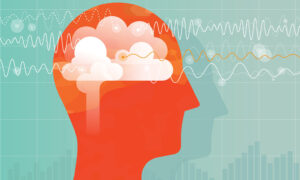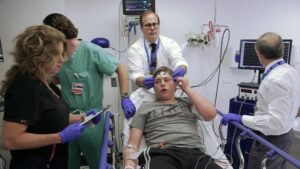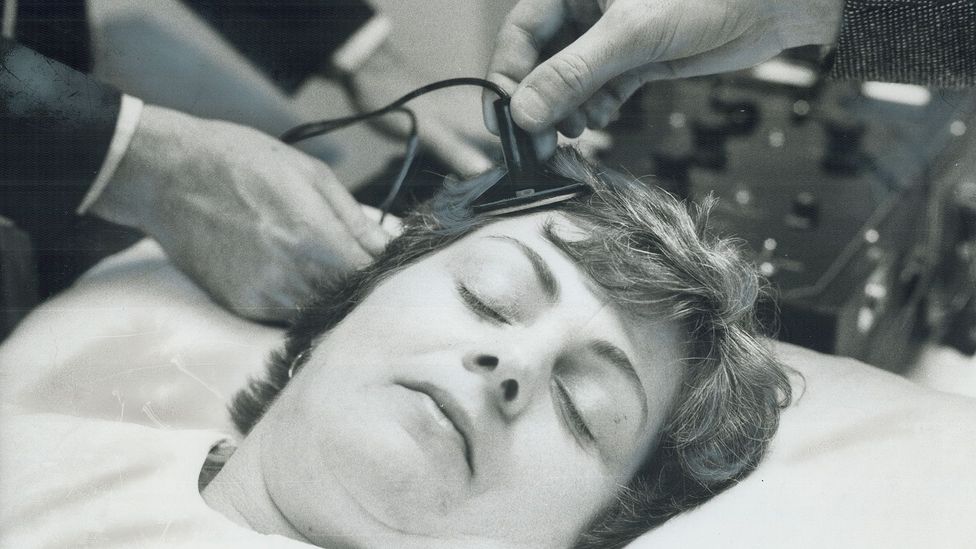Electroconvulsive Therapy (ECT) is a treatment for Obsessive Compulsive Disorder (OCD). In short, ECT is a psychiatric procedure that uses electricity to alleviate symptoms of OCD. ECT is not without risks, but it is one of the most effective treatments for OCD. If you are considering ECT as a treatment for OCD, or if you are already receiving ECT, it’s important to understand all the facts about the treatment. This blog post will provide you with all the information you need to know about ECT for OCD. From the history of ECT to its benefits and risks, read on to learn everything you need to know about this treatment.
Contents
What is Electroconvulsive Therapy (ECT)?

Electroconvulsive therapy (ECT) is one of the most effective treatments for obsessive-compulsive disorder (OCD). It works by using an electric current to cause a seizure in the brain. This disrupts the normal nerve impulses and can lead to relief from OCD symptoms. Electroconvulsive therapy can be used to treat patients with severe, intractable OCD. It is sometimes used when other treatments have not been effective.
ECT usually requires a series of sessions to be effective, and it typically takes several weeks for full symptom relief. There may be many side effects associated with ECT, such as headaches, confusion, and memory loss. However, these can usually be managed with medication and supportive care.
ECT is considered to be a safe treatment option for OCD when it is done by experienced professionals who use the best practices in administering the therapy. Research has found that ECT may lead to better outcomes.
Types of ECT For OCD
There are two types of ECT commonly used to treat OCD: unilateral ECT and bilateral ECT.
Unilateral ECT
One type of ECT is unilateral ECT. This type of treatment involves delivering electrical currents to one side of the brain. Unilateral ECT can be more effective in treating OCD symptoms than other types of ECT, as it has fewer side effects and a lower risk of cognitive impairment.
Unilateral ECT can also help reduce anxiety levels, which can improve overall functioning and quality of life.
Bilateral ECT
The other type of ECT used to treat OCD is bilateral ECT. Bilateral ECT involves delivering electrical currents to both sides of the brain simultaneously, which can be more effective in treating severe OCD symptoms than unilateral ECT.
However, this type of treatment has a higher risk of cognitive impairment and may cause more side effects. Patients should be aware of the risks associated with bilateral ECT before undergoing treatment.
How Does ECT Work?

ECT is a widely used and effective form of therapy for OCD. It works by inducing a seizure in the patient’s brain. This can help to relieve symptoms of OCD.
There are a few things that need to happen for ECT to be effective. First, the patient needs to have an adequate diagnosis of OCD. Second, they need to have severe and persistent symptoms that cannot be treated with other forms of treatment. Finally, ECT must be prescribed by a qualified doctor who understands how it works and how it can help patients.
There are many different types of ECT machines, but all work in the same way. The machine uses an electrical current to cause a seizure in the brain. The seizures usually last around 10 minutes, and they can often help to relieve symptoms of OCD. However, there is always some risk involved with ECT, so it should only be used on patients who are fully willing and able to take it.
ECT is usually very effective at relieving symptoms of OCD. However, it cannot cure the condition, and there is always a risk of side effects. Patients should always speak with their doctor before starting ECT, and they should be prepared for the possible risks and side effects.
Side Effects and Risks of ECT for OCD
Like other forms of psychotherapy, ECT can have positive effects on symptoms of OCD. However, like all treatments, ECT has some side effects and risks.
One side effect of ECT that is particularly concerning for people with OCD is an increase in anxiety and depression. In some cases, this may be severe enough to lead to suicide. Other side effects of ECT include :
Memory Problems
One of the most common side effects of ECT is memory problems. People may experience difficulty recalling specific memories, or they may have trouble keeping track of multiple conversations or tasks at once.
Seizures
ECT can also cause seizures. This can happen in any stage of treatment, but it’s more common in people who have had multiple treatments. Seizures can be dangerous and may lead to long-term damage to the brain.
Depression
Another side effect of ECT is depression. This can occur after any treatment, but it’s particularly common in people who have had multiple treatments. Depression can interfere with a person’s ability to live a normal life and can be very serious.
Some people may experience other side effects of ECT, but these are the most common. It’s important to talk to your doctor about any side effects you experience before starting treatment.
When to Seek Treatment For OCD?

Electroconvulsive therapy, or ECT, is a form of mental health treatment that uses electrical currents to relieve symptoms of OCD. While many people with OCD seek help from trained professionals, ECT can be effective for some individuals as an initial treatment.
ECT is typically prescribed in cases where other forms of treatment have not been successful. Before undergoing ECT, patients should undergo a comprehensive evaluation to determine if they are a good candidate for the treatment. Patients should also be aware that ECT is not without risks, and they should discuss these risks with their doctor before undergoing the procedure.
Some of the signs when you should consider treatment are:
- Obsessions or compulsions that interfere with your daily life
- Severe distress or impairment in your quality of life
- The obsessions or compulsions have been present for at least 6 months and have not improved with other forms of treatment you are willing and able to undergo the risks associated with ECT
- Feeling that your symptoms are out of control you or a loved one is experiencing symptoms of OCD.
Conclusion
ECT is an effective treatment for OCD, and it can be life-changing. If you are considering ECT for OCD, this resource will give you all the information you need to decide whether or not it is right for you. This article covers everything from the basics of ECT to specific questions that people with OCD often have about the treatment. I hope that this guide has helped answer some of your questions and provided you with enough information to make an informed decision about ECT for OCD.
For more information and guidance, please contact MantraCare. OCD is a mental health disorder characterized by obsessions and compulsions. If you have any queries regarding Online OCD Counseling experienced therapists at MantraCare can help: Book a trial OCD therapy session


